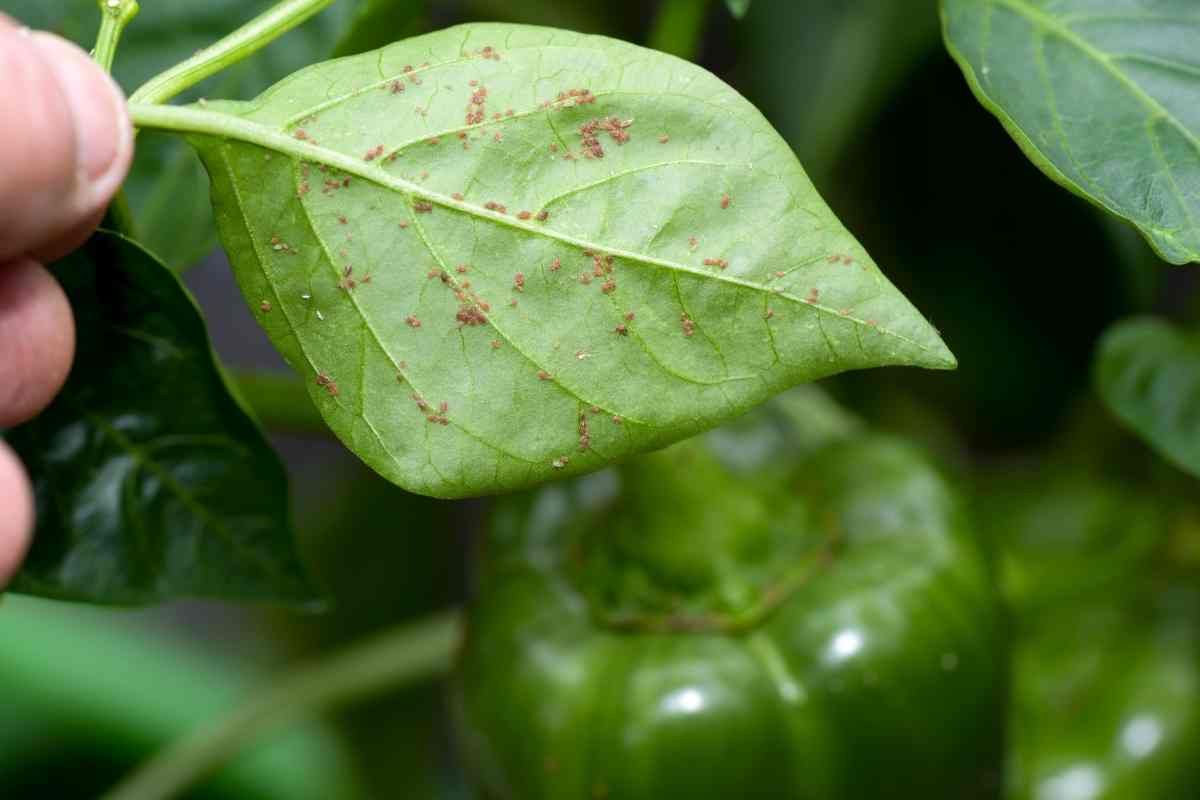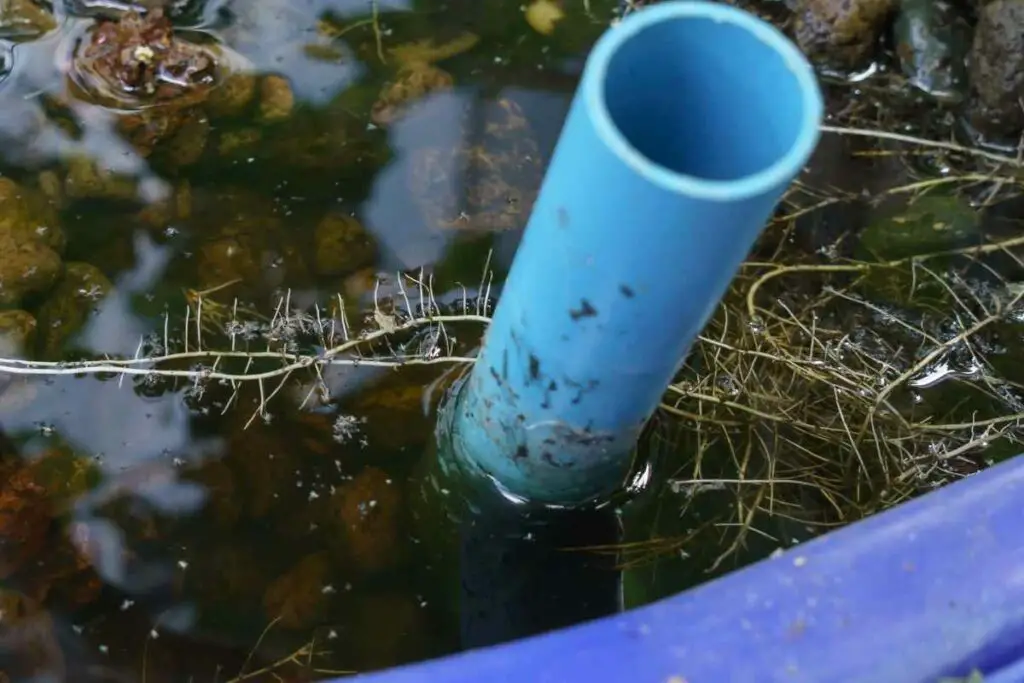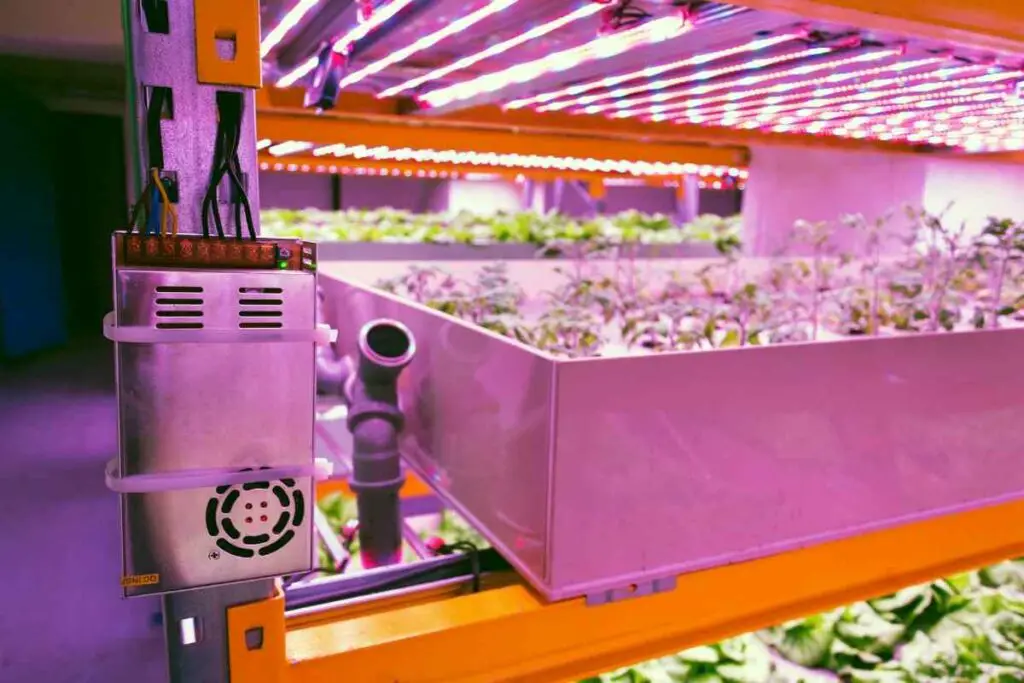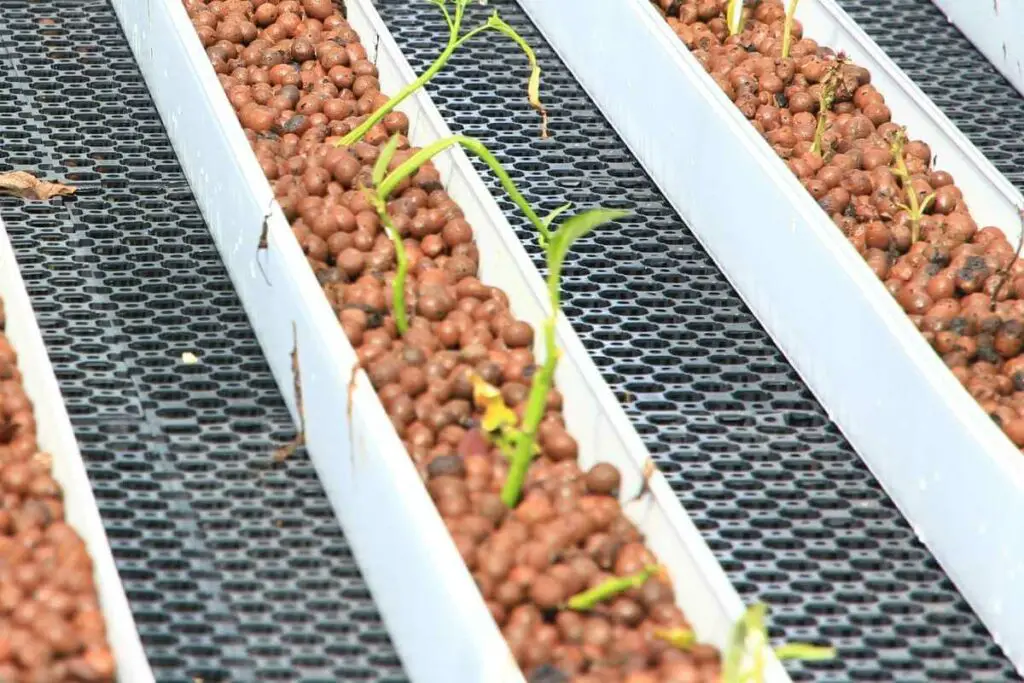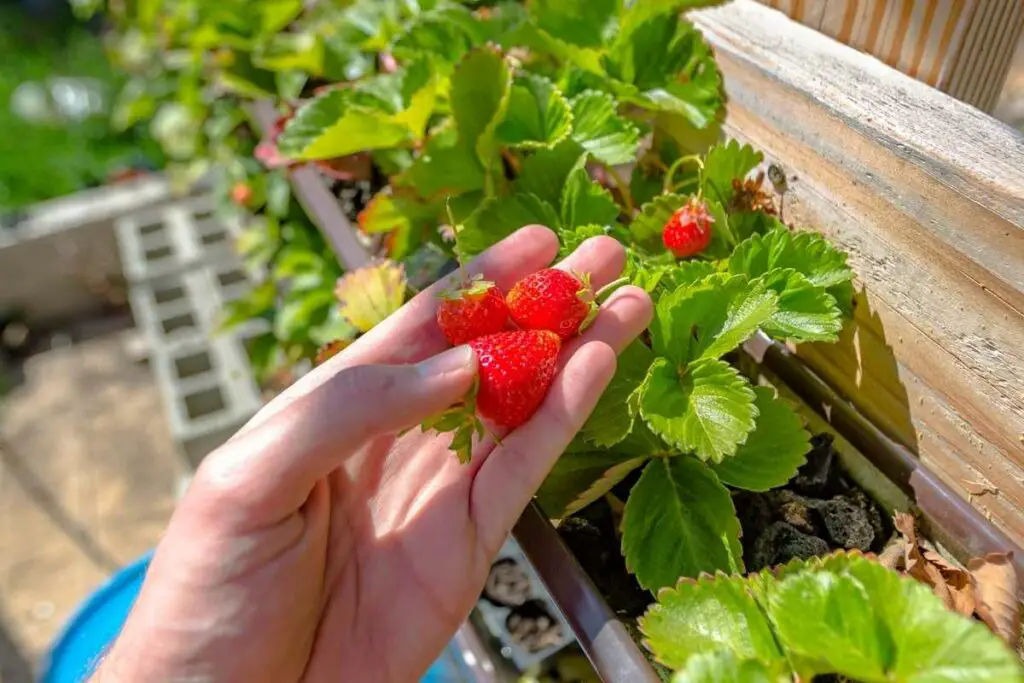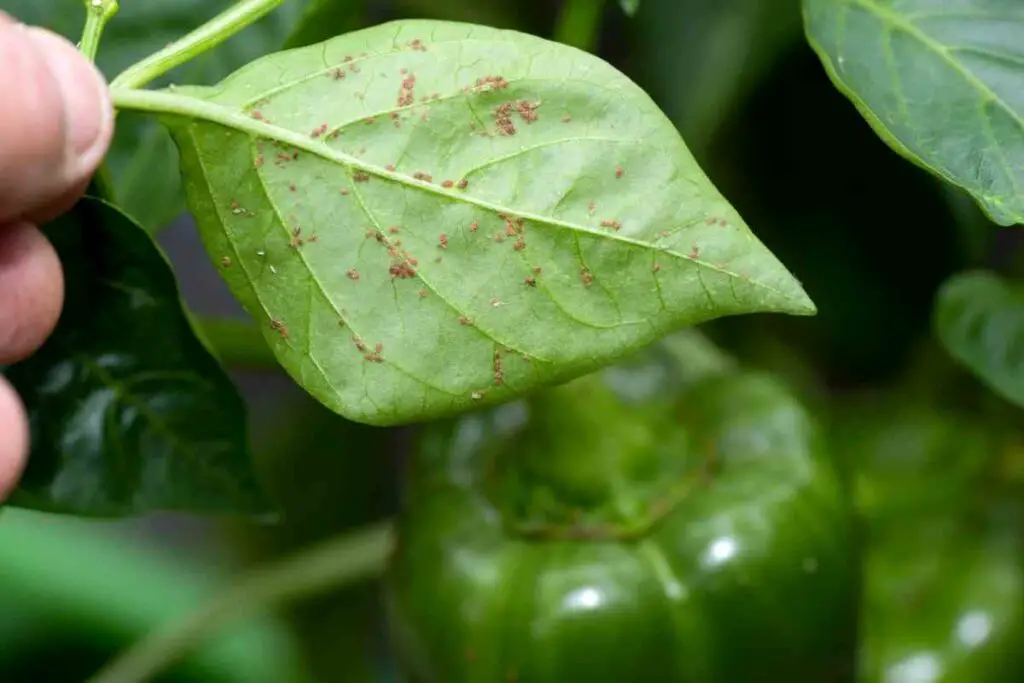Compared to other farming techniques, aquaponics tends to receive fewer pest infestations, especially at its early stages.
That said, you are likely to start experiencing pest-related problems a few months into your project.
Aquaponics aphid control is vital to ensuring that your investment doesn’t go to waste.
Quick Answer: How to control aphids in aquaponic systems:
- Manually remove them
- Biological control
- Organic Pesticides
- Water Hoses
- Mechanical Control
Since aquaponics aims to provide a sustainable and organic source of food, the methods you use to control pests like aphids should be chemical-free.
How Aphids Affect Your Garden
Although aphids don’t damage your crops significantly, they can hamper your farm’s visual appeal.
Specifically, they leave sticky substances on the surface of leaves and branches, and in severe cases, this mess might spread to the trees in your deck, walkway and other areas of your outdoor space.
The most commonly affected species are aspen trees:
- Because aphids mostly target leaves, the sticky coating they produce can reduce photosynthesis.
- This in turn causes a decrease in your crops’ growth and development rate.
Where infestation is widespread, aphids can hurt plant health. You’ll start noticing curly and discoloured leaves, and this is an indicator that treatment is required.
Aphids are one of the most challenging pests to combat in an aquaponics system.
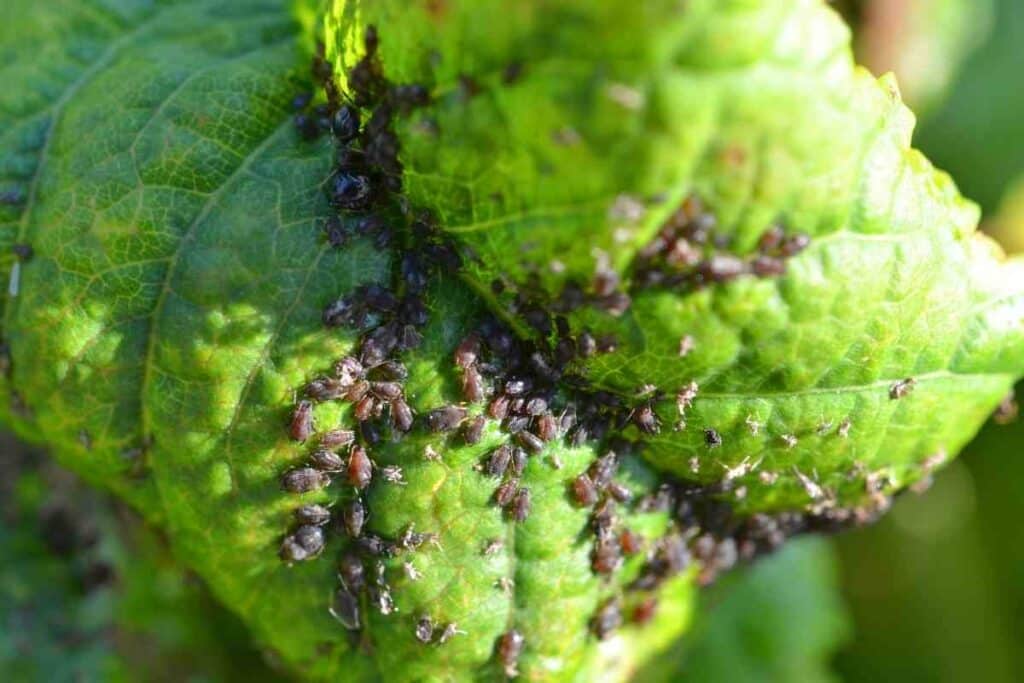
These insects usually infest your garden after being introduced by ants from a neighbouring farm, being attracted by plants, or by you when you purchase cuttings and seedlings from a local dealer.
According to research, there are over 4,000 different types of aphids. It’s highly likely that tens or even hundreds of these insects have infested your farm at some point.
As mentioned earlier, aquaponics emphasizes sustainability, meaning that chemical sprays are a no go.
Here are the reasons why:
- Increased risk of chronic diseases – when you spray plants with insecticides and other pesticides, they absorb the harmful chemicals. These substances are known to increase the risk of chronic illnesses like heart disease, cancer, hypertension, stroke, and so on when consumed by humans.
- Adverse effects on fish – chemicals can kill your fish if used over extended periods.
- Killing beneficial insects and bacteria – while chemicals are effective at eliminating harmful insects, they also kill the useful ones in the process. This hurts the ecological balance in your aquaponics system.
Effective Methods of Controlling Aphids
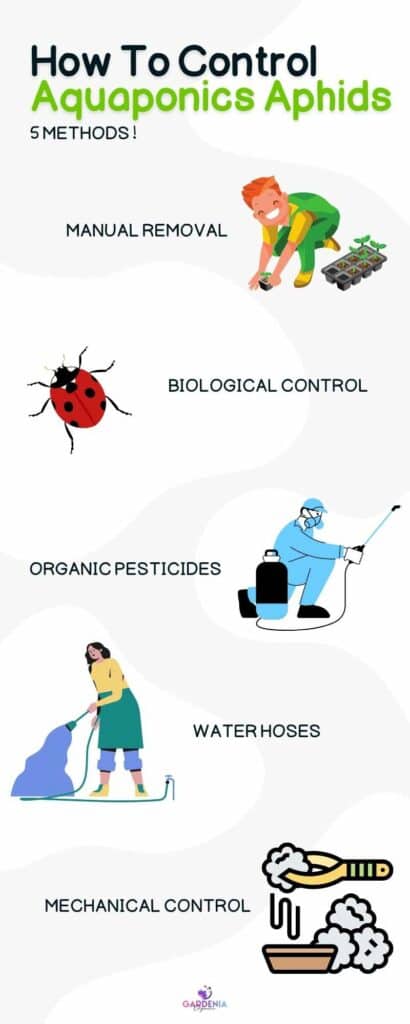
The following are some of the most effective methods used in aquaponics aphid control.
- Manual removal
- Biological control
- Organic pesticides
- Water hoses
- Mechanical control
Manual Removal
Removing aphids manually is among the simplest and most affordable means of controlling this insect.
It is also eco-friendly because it uses no chemicals. Here, you use your hands or a paintbrush to remove the insect from the affected plants.
On the downside, this method isn’t practical if you own a large garden.
From Experience: It’s only useful if you practice aquaponics as a pastime activity or to produce food for domestic consumption.
Biological Control
Using biological methods is perhaps the most environmentally friendly technique of preventing aphid infestation in your aquaponic system.
First, you can target plants with extensive infestation, uproot them and burn them away from the farm.
Then, follow it up with manually removing the insect from the plants with little infection.
From this point, ensure that you conduct regular inspections to see if there’s any new wave of aphids.
Second, you can use predatory insects that feed on aphids.
These include:
- Parasitic wasps – you might get stung while using this control mechanism, but the good thing is that it is effective. The wasps lay hundreds of eggs which then mature into adults and start feeding on the aphids.
- Green lacewings – adult female lacewings have a lifespan of four weeks, during which they lay up to 600 eggs. After hatching and maturation, their offspring can help you deal with aphids, greenhouse whitefly mealybugs, moth eggs, scales, and two-spotted mites.
- Ladybirds and their larvae – these prey on aphids, mites and scales. Adults, which live for up to one year, consume thousands of aphids, while their larvae can eliminate up to 400 insects before morphing into a pupa.
The last biological control method involves making the most of symbiotic relationships.
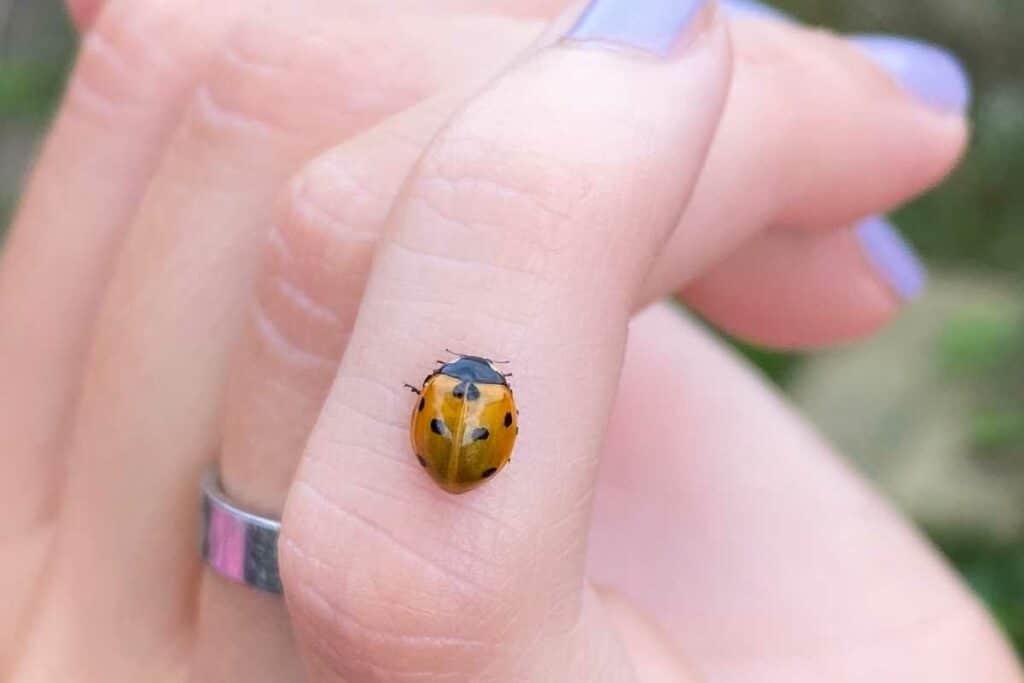
Ants benefit from aphids by ‘sucking’ honeydew off them.
This honeydew usually causes moulding in plants. In return, the ants protect the aphids and their eggs from predatory attacks.
Organic Pesticides
Another method that abides by the principles of aquaponic farming is using organic pesticides.
Their natural composition means that they don’t have adverse effects on your crops and fish.
Here are some of the organic pesticides you can use to tame aphid infestation:
- Allium spray – this starts with planting chilli, chive, garlic, mustard, and onions in your aquaponic system. It helps with aphid repulsion. If an infestation occurs, you can crush the fruits of above-mentioned plants and dilute with water to make a spray.
- Chelated iron – slug and snail pellets contain chelated iron which helps them in regulating metabolism. Introducing them to your aquaponic system can help in aphid control.
- Fatty acids (soap spray) – these are made using coconut oil, natural soaps and vegetable oil. It’s easy to make and can effectively eliminate aphids, flies, mites, and thrips.
- Mineral oils – extracting oils from some plants can help prevent mildew and aphid infections.
- Neem seed oil – this is an all-purpose pest control mechanism that prevents moulting, hampers mobility and feeding, and generally disrupts growth of several types of insects at all stages of their life cycle. To make this pesticide, mix two tablespoons of neem oil with a gallon of water.
Water Hoses
Did you know that you can remove aphids by simply directing water hoses at infected plants?
All you need to do is set the water at high pressure such that it blasts the pests off the leaves.
Once they fall, they won’t be able to climb again and will eventually die. This method also removes the unsightly sticky coating and mould caused by aphids.
Mechanical Control
Mechanical control involves setting a trap that entangles and kills pests before they attack your crops.
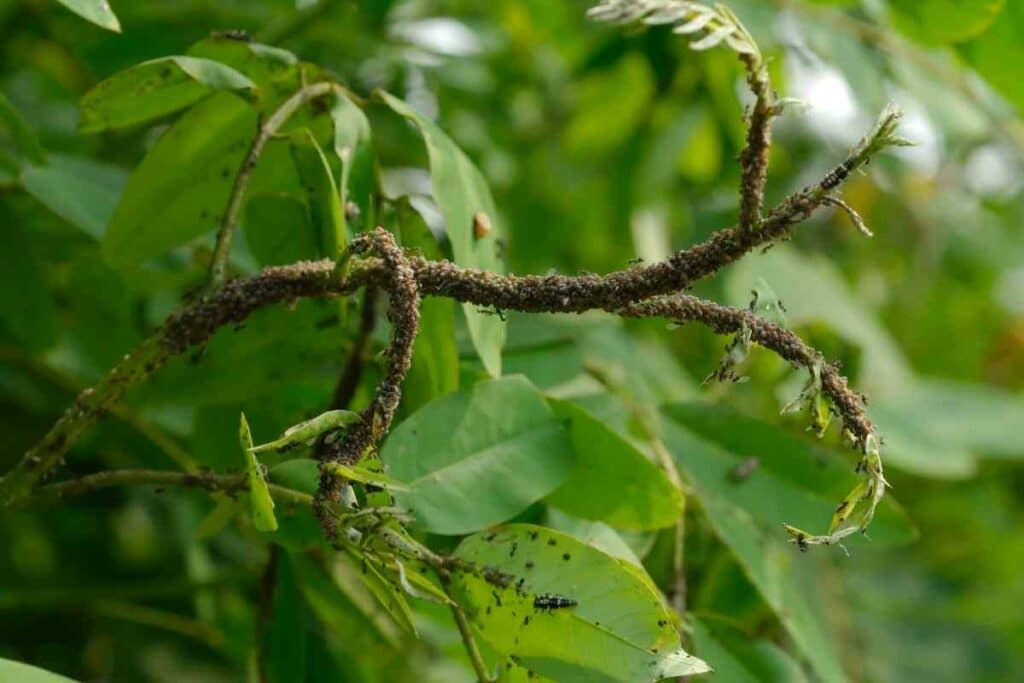
For aphids, you can wrap cotton wool at the base of your plants so that it prevents them from reaching the leaves.
Another mechanical technique involves using a handheld vacuum to suction the pests off your plants.
Watch Out: You need to be careful with this method as setting the pressure too high can break weak stems.
Preventing Aphid Infestation in Aquaponics
While there are many effective ways of eliminating aphids from your aquaponic system, it’s better to employ preventative measures.
That way, you’ll save the time and money you would’ve otherwise spent on treating your plants and fish.
Below are some of the proven ways of preventing aphid infestation:
- Regular inspections – ensure that you take a walk around your garden at least twice weekly to check for new infestation. This might sound tiresome, but remember that most insects have a short life cycle and reproduce in hundreds.
- Maintain cleanliness – keeping your farm tidy is an excellent way of keeping pests at bay. Ensure that you remove any unwanted vegetation and plants whenever you do inspections.
Wrapping Up
Aphids can reduce your farm’s productivity since they interfere with crucial processes like photosynthesis.
Moreover, they leave your garden in a disgusting mess.
As a farmer, it’s your responsibility to implement prevention measures and always have the equipment needed to combat infestations.
